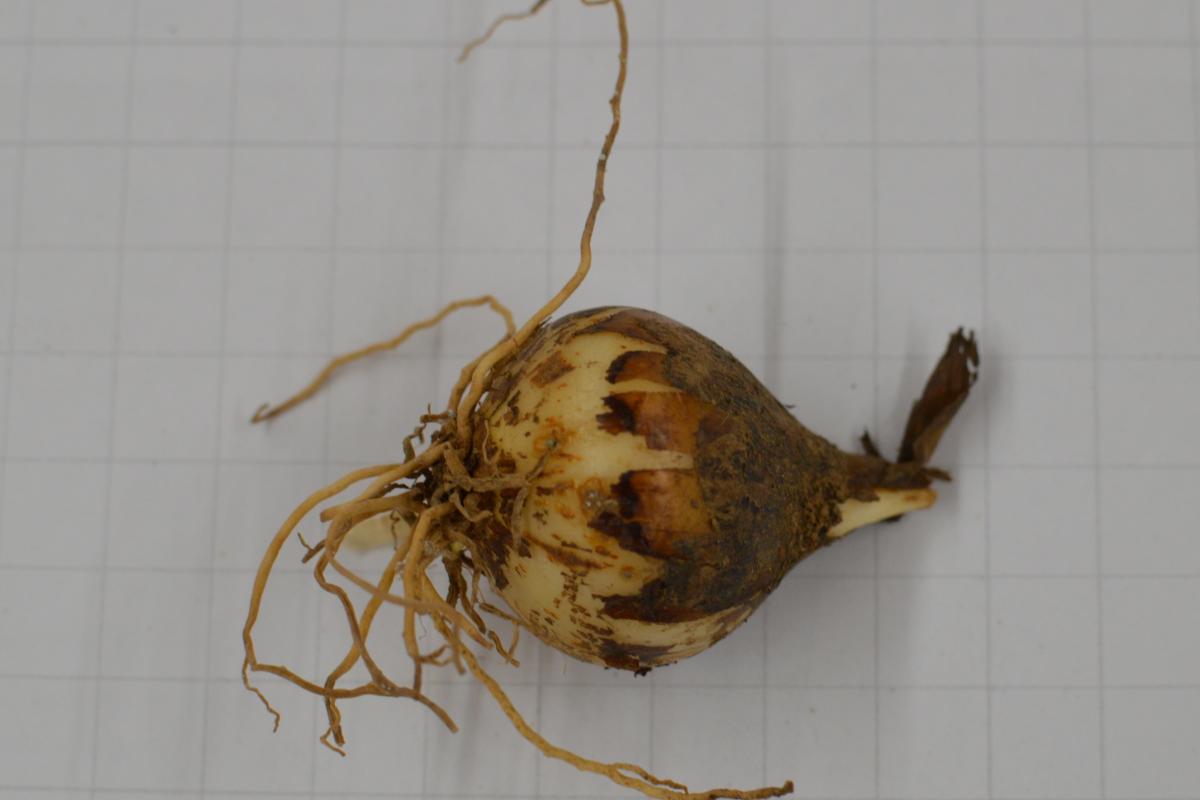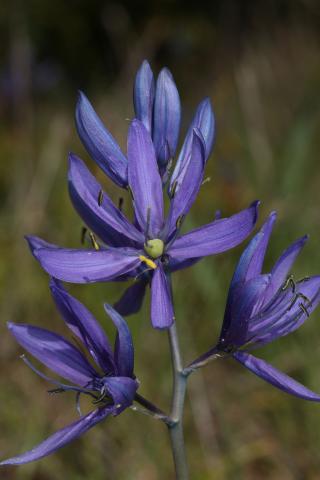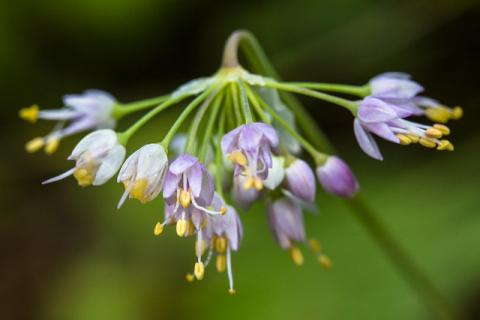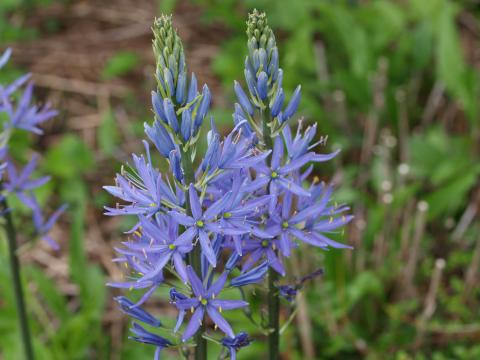Camassia quamash
Camassia quamash (Pursh) Greene is an herbaceous monocot perenial with glutinous bulbs. Basal leaves are grass-like, 10-15 mm broad and up to 50 cm long. Flower stems are erect, 20 to 70 cm tall, with pale to deep blue flowers.
Bulbs are tear-dropped shape, and vary in size from small (1 cm in diameter) to very large (5+ cm in diameter).
Common camas bulbs were a staple food both all Northwest peoples, second only to salmon in importance. Camas was commonly traded across the region, and groups traveled far to harvest the sweet, inulin-rich bulb. Bulbs were harvested after the plant flowered, from May to early August. Bulbs were cleaned and steamed in pits with black lichen for 48-72 hours. Once cooked, they were sometimes mixed with other foods or mashed into cakes and dried.
Common camas grows throughout western North America, primarily from the Rockies west, and is found in vernally wet grassy meadows and open areas. Soil pH affects the color of the blooms.









